I encourage anyone that has more information (Flight Log Book entries) or photos on 112 Squadron please send an e-mail to raf_112_sqdn@yahoo.com before the history is lost.
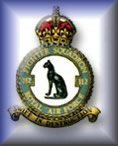
RAF 112 Squadron Photos 1941
George Walton McKeag
even though the photo is labeled 1942, the above photo is a Tomahawk
which replaced the Gladiators on or about 29/06/41, the Tomahawk was replaced by the Kittyhawk
on or about 29/12/41
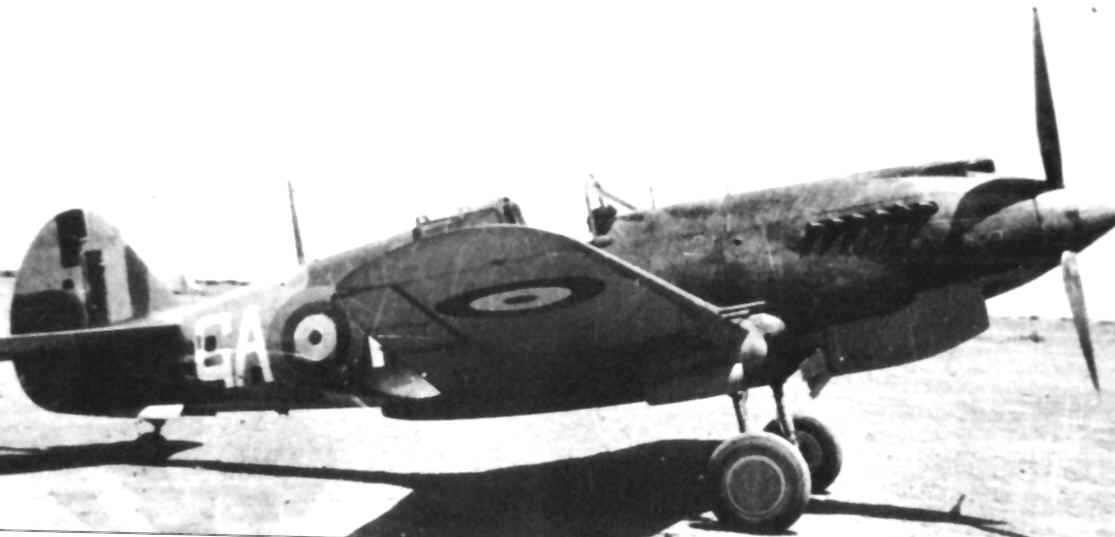
AN413 coded GA-K flown by Jack Bartle and Neville Duke, lost 12/12/41, K, Plt Off Robert James Daniel Jeffries, 406179. RAAF, A/C Missing In Action near Tmimi, Libya Same plane Plt Off Bartle flew,Oblt. Erbo Graf von Kageneck,1346 hours, 9./JG 27, Raum Tmimi pilot KIA served with 112 Sqdn RAF, under RAF control; was coded 'K' and had 'Nan' in outline under the cockpit and forward of that a Kangaroo also in outline while with 112 Sqdn
Sandy. Butch and Stinker is the label on this picture supplied by Colleen Bowker and family
Not sure yet who Sandy is (update from Tony Jeffries Sandy is Ken Royce Sands) , Butch is Robert J. D. Jeffries and Stinker is thought to be Flying Officer F.T.D.or Percy Drinkwater Strong, (42277) an original member of 112 Sqdn that sailed with the Sqdn on the Argus to the Middle East, this picture would have to have been taken sometime after 31 September 1941 as both Ken Sands and Robert (Bob / Butch) Jeffries arrived in the Squadron on that date.
anyone have more information? Colleen Bowker writes: Thinking back about the photos, most of those from the desert were from a tiny camera Neville had which was sent back with his personal effects to his parents after he was shot down. They never thought to see if there was any film in the camera and it stayed there until after we were married in 1946. They had to be especially printed because no one had seen a similar camera and the photographs came out about 3cms by 2cms so the photos were all enlarged from them. The camera in question lay about the house for years as we could never get film for it, but it must have been fairly advanced from the quality of picture it produced after all that time and that’s possibly why he was able to remember all the names
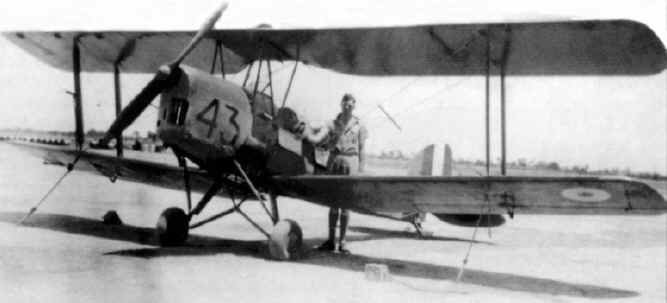
Thought to be F. T. D. or Percy Drinkwater Strong, (42277) not confirmed as the right Strong for RAF 112 Sqdn
But shows how tall he was beside this Tiger Moth trainer
If it was Percy Drinkwater Strong he was shot down 19/08/1942 while with 232 Sqdn.
Son of Elijah Strong, and of Christina Elizabeth Strong, of Leamington Spa, Warwickshire
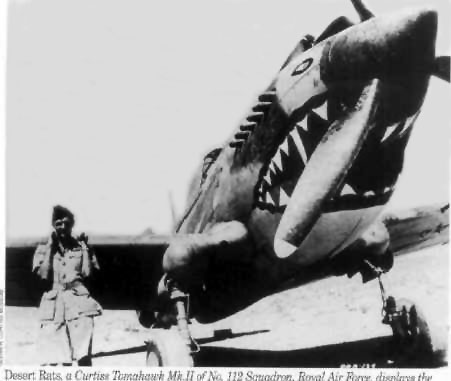
Tomahawk Mk IIB 112 Sqdn pilot unknown Thought to be Jerry Westenra posing in front of Pete Brunton's plane. Dad (Tom Dugdill, 19/9/40 to 7/12/45) believes that George Staly, a friend of his and an engine fitter, was the first person to paint a shark on a Tomahawk, then the rest of the pilots wanted the same and the ‘Shark Squadron’ was born.
Taken February 1941, Recent information found on the internet.
Photos published of his mount (D. F. "Jerry Westenra) in the London Illustrated News prompted
the AVG to adopt the same Shark mouth design. When one studies the teeth design with the photo below one finds the artist was relatively consistent with his work.
.
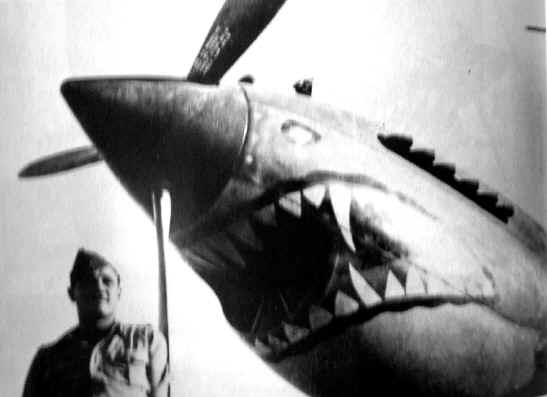
Plt Off Robert James Daniel "Butch Jeffries, 406179
Photo of Butch Jeffries provided by Colleen Bowker and Family
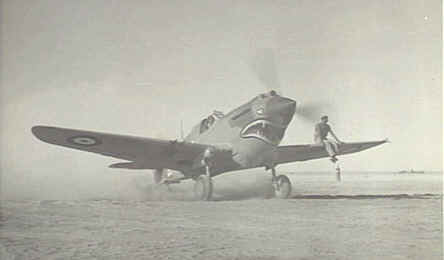
Believe this to be a picture of Jeffries as well but cannot confirm it
The next photos show the progression of the Shark Mouth on Neville Bowkers Tomahawk coded B named MENACE
Picture provided by Colleen Bowker and family, note the small mouth painted on Neville's' tomahawk coded B named MENACE also of note is the unpainted "A" in the background
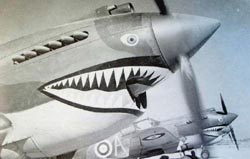
The Shark Mouth evolves, on15/6/41 Sqn Ldr Schwab personally picks up AK461 which was eventually coded "A" by the end of the day several pilots had flown it
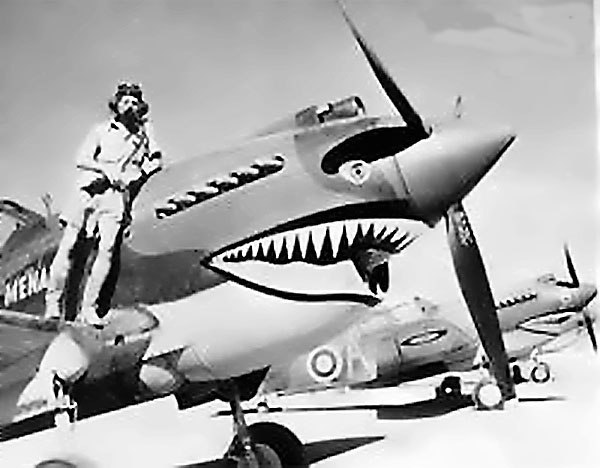
Tomahawk MkII B Sept 1941 probably Sidi Haneish plane named Menace, pilot Flt Lt Neville "Bowks" Bowker,,DFC, 89773, RAFVR, plane identified carrying the single code letter B, good chance this is AN218, with AK461 "A" in the background,on 25/11/41, Sgt Frederick Dunford Glasgow NZ402469, RNZAF, Aircraft destroyed in combat over Sidi Resegh, 1 and 4/JG27, pilot KIA, at 1512, seven 3 Squadron Tomahawks took off with twelve of 112 Squadron and met seventy Axis aircraft over Sidi Rezegh. pilot shot down , KIA, by Oberfeldwebel Albert Espenlaub of I./JG 27
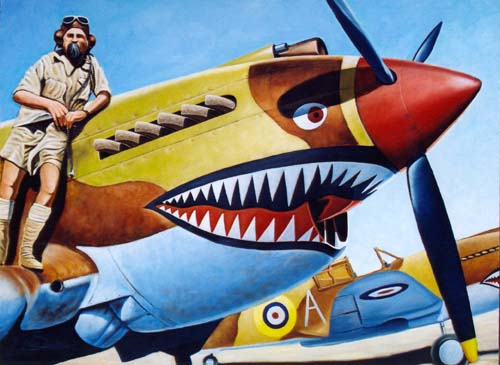
Hello
My name is Noel Barnes. I am aviation artist living Western Australia. I came across a black and white photo of these 112 Sqn Kittyhawks and decided to take the challenge of painting it in colour. I thought you may be interested in having a look and maybe having it on your website. Please feel free to post it if you would like.
The painting is in oils on stretched canvas and is 90cmx60cm. It is unframed.
Kindest Regards
Noel.
Update:04 Sept 2005
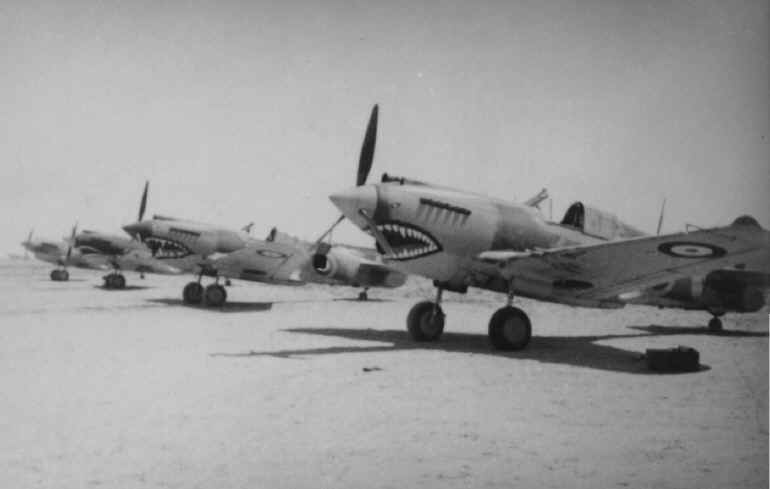
Photo courtesy of Colleen Bowker and Family
Early Tomahawks some with nose cones painted red some without, I maybe wrong but is the camouflage painting reversed on some of these?
Hello Rob,
The picture from Colleen Bowker showing Tomahawks looks very interesting. It looks like the aircraft nearest the camera (and the second, and maybe the fourth aircraft) show a more contrasting lighter colour than the ‘European’ scheme. So they had been repainted with either with Middle Stone or Light Earth – see that the lighter upper surface shade looks quite clean and new? In the nearest aircraft, the lighter colour is where the green once was, but you’re right – doesn’t the rear one look as though it’s had the brown over painted! That scheme would put the plane into the RAF “Tropical Land Scheme” with Dark Green and Middle Stone upper surfaces, and the other two in what became the “Desert Scheme”.
What’s also interesting is how long it seems to have taken to repaint the undersides – they seem to have stayed in their light colours for quite some time, rather than being repainted with Azure or Light Mediterranean Blue (which was standard). Or the fantastic blue shade in the colour pictures – I think that’s ‘Deep Sky’. (http://www.mts.net/~royb/112_photos_page_4.html)
Stephen Cumming
There was one thing I do recall Neville saying about the repainting of the squadron in the desert and that was that they had to get special permission to repaint on top and under because the colors were wrong for the desert even the colour for the sky looking up at flying aircraft and made them easy to see and it took some time because the ground staff had a fulltime job repairing aircraft. I always laughed about that because the Sharks teeth were enough to attract anything.
Colleen Bowker
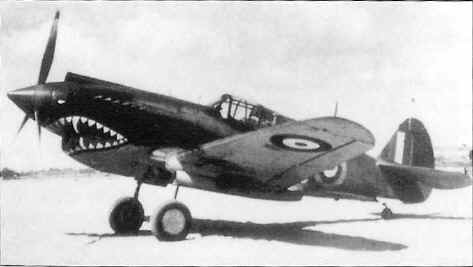
Tomahawk Mk II B AK 367 probably coded C, European camouflage, September 1941 Fayid airfield, Note the Gladiator behind it on the left of the picture.
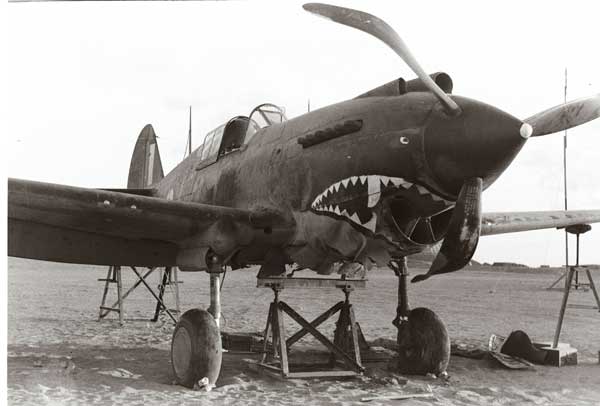
A belly landed Curtiss Tomahawk, coded "X", possibly FR259, has been lifted back onto the undercarriage.

Mersa Maruh 1941
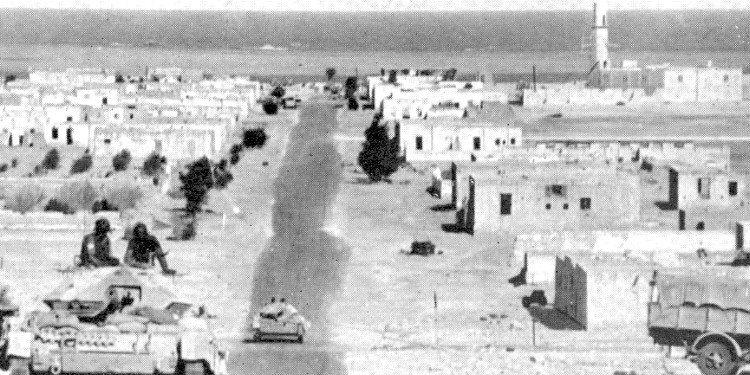
Mersa Maruh 1941


above photos taken 20 Oct 1941
Above plane was coded with single letter "C" the image under the cockpit is a profile of a native American Indian superimposed on a white circle, similar to the image used by 1939 -1940 Pontiac cars (hood ornaments) note the Radio mast, pilot unknown at this time
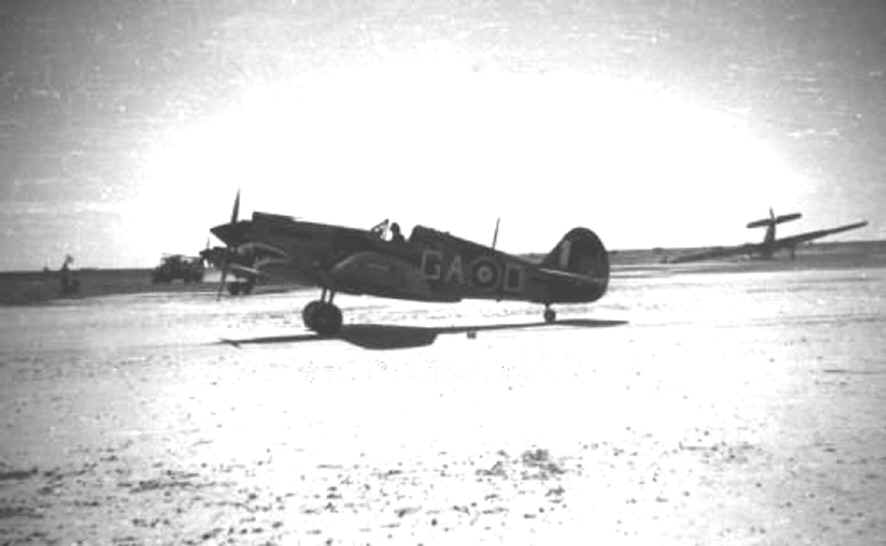
Tomahawk GA-D lines up for take off with wrecked Wellesley behind
Interesting to note GA F on photo page 2 has almost the same mouth painted on it as did GA V....same artist?
The origin of the shark's mouth dates back to 1941, as documented in the Champlin Fighter Museum at Falcon Field, Mesa, Arizona. An American Volunteer Group pilot, Charlie Bond, was visiting the home of Roy and Alice Klein, American Baptist missionaries in Toungoo, Burma. Bond noticed their copy of the Illustrated Weekly of India, dated 2 November 1941, had a picture of a Curtis P-40B Tomahawk with a shark's mouth decorating the nose. The aircraft belonged to the RAF No.112 Squadron. The next day, 16 November 1941, Bond rode his bicycle into town, bought some paint, and by that afternoon, had marked his P-40B in the manner subsequently adopted by the AVG as the trademark of the "Flying Tigers." There were 13,738 P-40s built and used by twenty-eight countries. The last version was the P-40N. The British called them Tomahawk or Kittyhawk. The USA named the P-40 "Warhawk." Champlin Museum has one built in 1944 with fewer than sixty flying hours on the aircraft.
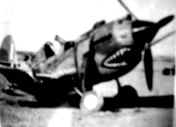
30 November 1941 Plt Off (later Flt Lt) Neville"Bowks" Bowker, 89773
Above information supplied by Terry McGrady
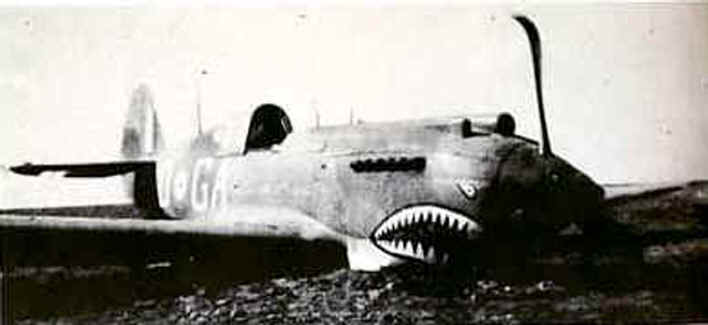
Tomahawk coded GAD after a forced landing
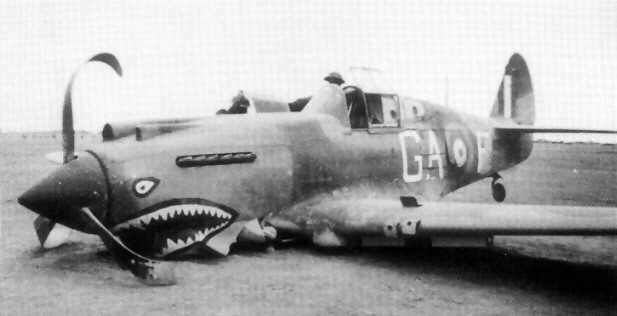
GA-F, note only two wing mounted guns with the British radio mast Tomahawk Mk II B of 112 Squadron, that crash landed after a mission. 112 Sqn RAF/Pilot F.O. Duke - AK402 GA-F was a Tomahawk IIB (P-40C) flown by Flying Officer Neville Duke of 112 Sqn RAF in November 1941. While flying this aircraft, Duke was credited with three kills in nine days. (a CR.42, a Me 109F, and a G.50) On 30 November, the aircraft was lost when Duke was shot down by Otto Schultz of JG27. Duke bellied in and survived the crash, and became the Allies' highest scoring ace in the Mediterranean theatre. After the war, Duke (DSO, OBE, DFC with two bars, AFC, Czech Military Cross) flew as a test pilot and at one time held the world speed record.
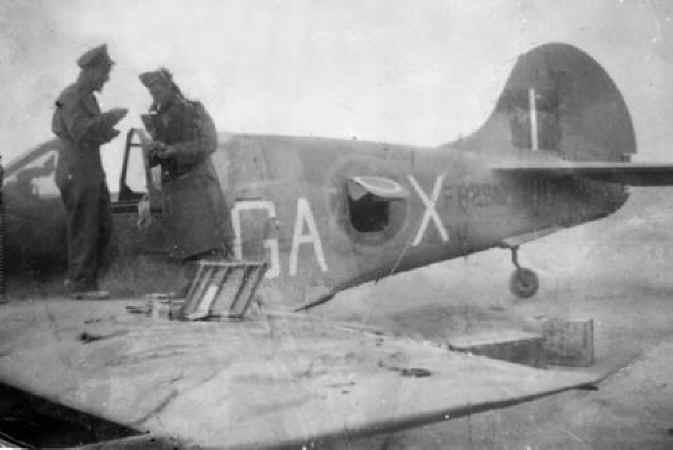
GA X, FR259. Kittyhawk Mk III, short tail. Flight Sgt Randolph Charles Carlyle Smith J16175 RCAF, 8/11/1942,
damaged in ops and force landed. seen here are members of 53 RSU
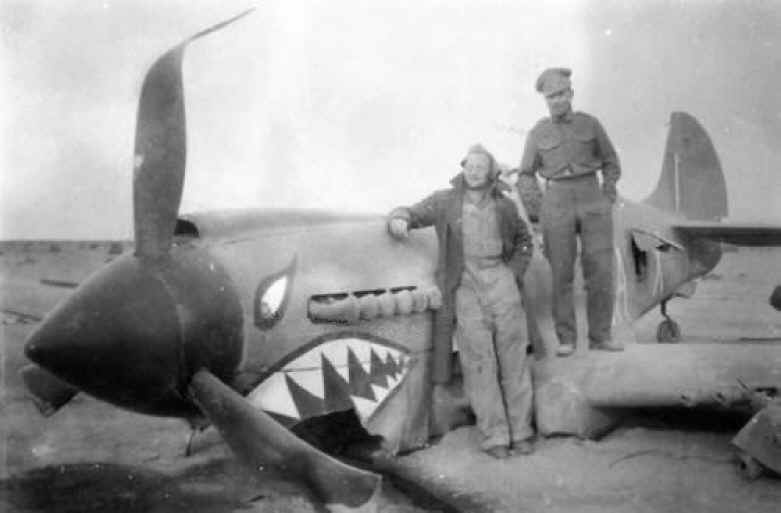
F Sgt R C C Smith and another 53 RSU member with FR259, GA X
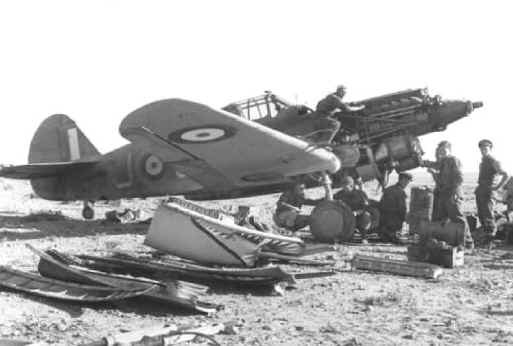
GA J, Tomahawk serial AK475, November or December 1941

November 1941, Sidi Haneish, Standing left to Right Sgt William Earl Houston, 402473
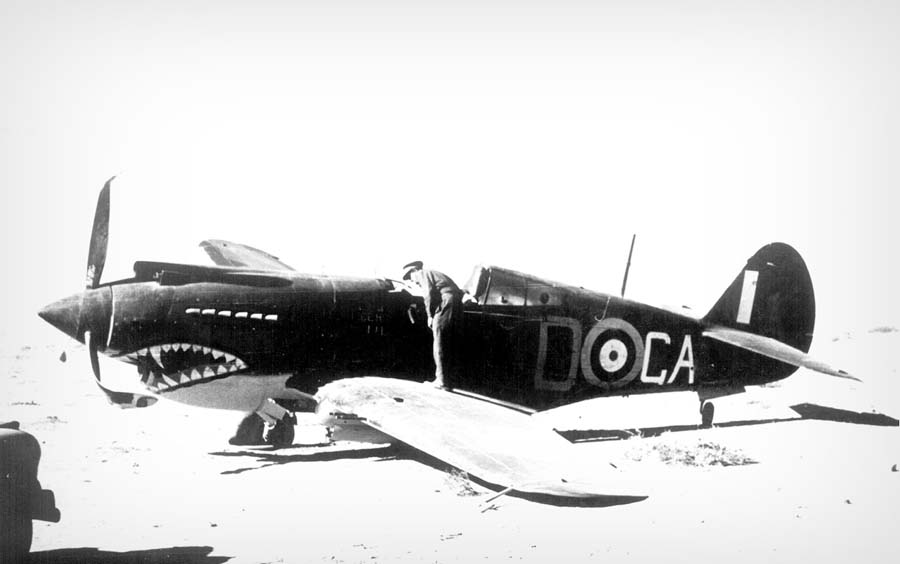
Tomahawk Mk. IIB identified to me as AK457 / GA O, but to me it looks more like GA D when comparing the Shark Mouth in the above photo of GA D but the letters GA are opposite , Photo contributed by Chris Buzzy
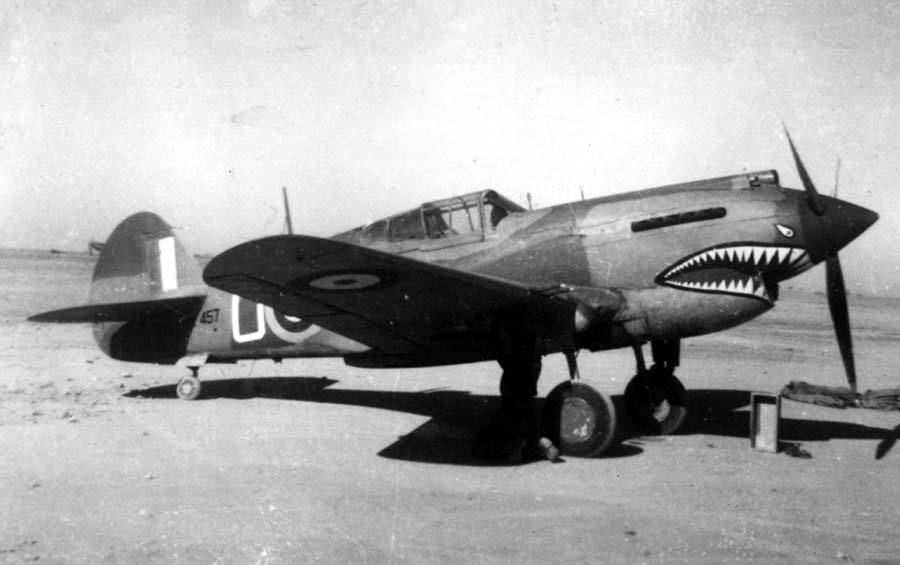
Tomahawk Mk. IIB AK457 / GA O, Sgt William Earl Houston,
NZ402473, RNZAF 12/12/1941, aircraft Missing In Action near Tmimi, Libya, KIA , Oblt. Erbo Graf von Kageneck:
9./JG 27, Dunes W. Tmimi: no height time 13:48 hours. Photo contributed by Chris Buzzy
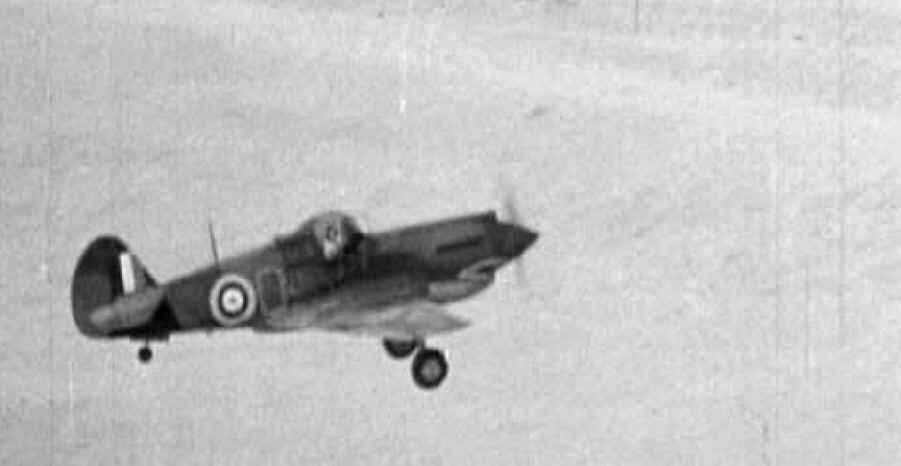
Tomahawk coded O serial unknown at this time, probably taken from a news reel film, note the open canopy during take off.
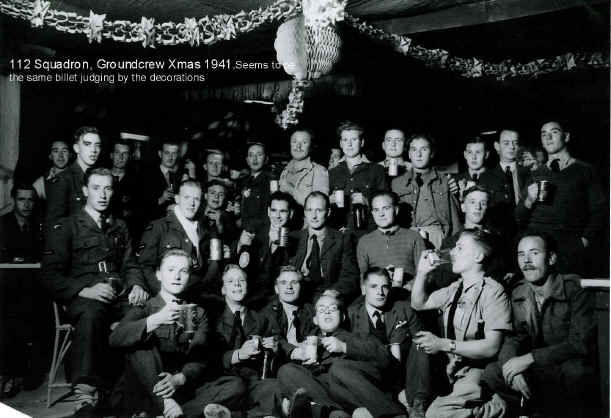
Members of 112 Sqdn Christmas 1941
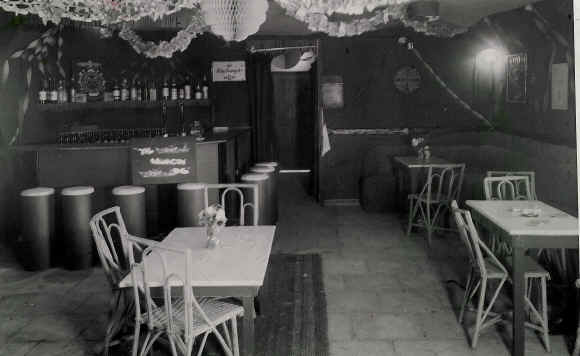
112 Sqdn billet Christmas1941
Sent in by Joe Macdonald, son of LAC Murdoch (Mac) Macdonald, RAF 535577, RAF 112 Sqdn
A Christmas Feast to say the Least, note the crafty V for Victory
hidden behind the Air Force Symbol at the bottom of the page